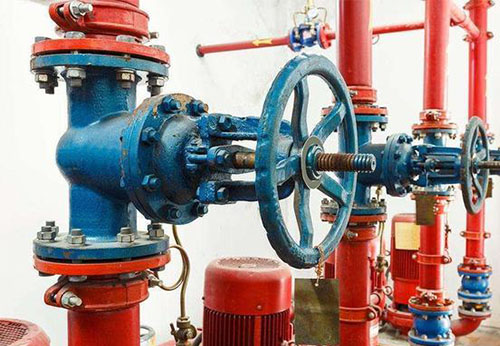Application of valves in heating systems
Posted by Bundor valve
The heating system is an indispensable part of modern buildings, and its operational efficiency and stability directly affect the comfort of the living environment. Valves play a crucial role in heating systems by controlling fluid flow, pressure, and temperature to ensure efficient and safe operation of the system. The following are several commonly used valves and their applications in heating systems:

1. Ball valve
Ball valves are widely used in pipeline branches, equipment connections, and other locations in heating systems. The full bore design of the ball valve enables it to perform well in situations where rapid opening and closing is required, effectively reducing system pressure fluctuations and improving system stability.
2. Check valve
Check valves are used to prevent fluid backflow and protect heating systems from the impact of backflow and water hammer effects. Check valves in heating systems are usually installed at boiler outlets, pump outlets, and other locations. The structure of a check valve is simple, but its function of preventing backflow is crucial for the safe operation of the system.
3. Butterfly valve
Butterfly valves control fluid flow by rotating discs, which have advantages such as low flow resistance, fast opening and closing speed, and light weight. Butterfly valves in heating systems are commonly used in large-diameter pipelines, branch pipelines, and other locations. Butterfly valves are easy to operate and suitable for situations that require frequent opening and closing, effectively reducing the maintenance workload of the system.
4. Drain valve
A drain valve is used to remove condensed water and air from the system, preventing moisture and corrosion of pipelines and equipment. Drain valves in heating systems are usually installed in steam systems, radiators, and other locations. The performance of the drain valve directly affects the efficiency and lifespan of the system, ensuring that the condensed water in the system can be discharged in a timely manner, and maintaining the dryness and cleanliness of the system.
5. Globe valve
Globe valves control fluid flow by lifting and lowering the valve stem, and have the characteristics of good sealing performance and high operating torque. Globe valves in heating systems are commonly used for pipe branches, equipment connections, and other locations. The fully closed state of the globe valve has good sealing performance and is suitable for situations that require frequent opening and closing, ensuring the stable operation of the system.
Valves play a crucial role in heating systems by controlling fluid flow, pressure, and temperature to ensure safe and efficient operation of the system.

1. Ball valve
Ball valves are widely used in pipeline branches, equipment connections, and other locations in heating systems. The full bore design of the ball valve enables it to perform well in situations where rapid opening and closing is required, effectively reducing system pressure fluctuations and improving system stability.
2. Check valve
Check valves are used to prevent fluid backflow and protect heating systems from the impact of backflow and water hammer effects. Check valves in heating systems are usually installed at boiler outlets, pump outlets, and other locations. The structure of a check valve is simple, but its function of preventing backflow is crucial for the safe operation of the system.
3. Butterfly valve
Butterfly valves control fluid flow by rotating discs, which have advantages such as low flow resistance, fast opening and closing speed, and light weight. Butterfly valves in heating systems are commonly used in large-diameter pipelines, branch pipelines, and other locations. Butterfly valves are easy to operate and suitable for situations that require frequent opening and closing, effectively reducing the maintenance workload of the system.
4. Drain valve
A drain valve is used to remove condensed water and air from the system, preventing moisture and corrosion of pipelines and equipment. Drain valves in heating systems are usually installed in steam systems, radiators, and other locations. The performance of the drain valve directly affects the efficiency and lifespan of the system, ensuring that the condensed water in the system can be discharged in a timely manner, and maintaining the dryness and cleanliness of the system.
5. Globe valve
Globe valves control fluid flow by lifting and lowering the valve stem, and have the characteristics of good sealing performance and high operating torque. Globe valves in heating systems are commonly used for pipe branches, equipment connections, and other locations. The fully closed state of the globe valve has good sealing performance and is suitable for situations that require frequent opening and closing, ensuring the stable operation of the system.
Valves play a crucial role in heating systems by controlling fluid flow, pressure, and temperature to ensure safe and efficient operation of the system.
 简体中文
简体中文 Русский
Русский Español
Español Bundor - Butterfly, Gate, Check, Ball, Globe Valve Manufacturer, Supplier & Distributor
Bundor - Butterfly, Gate, Check, Ball, Globe Valve Manufacturer, Supplier & Distributor
